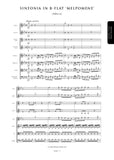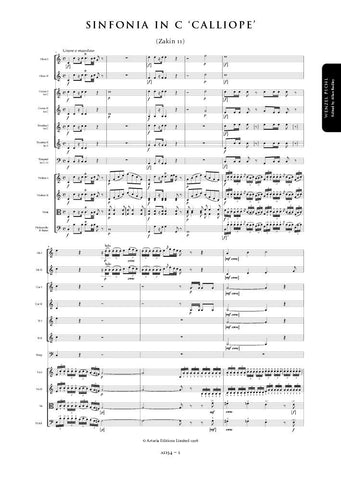Description |
Pichl, Wenzel (1741-1805)
|
||||||||||||||||||
Audio sample |
|||||||||||||||||||
Details |
Unlike Erato and Euterpe who have strong associations with musical instruments (lyre and flute), Melpomene, the Muse of Tragedy, is not normally associated with music.While the symphony undoubtedly possesses a kind of magisterial sweep it is questionable whether any of its individual movements attempt a musical depiction of tragedy. If anything, the absence of such pictorial writing lends weight to the argument that Pichl subtitled these works for some other purpose. It may be significant that whereas Breitkopf advertised by name the symphonies Terpsichore, Euterpe and Uranie, the present work is untitled and appears alongside several other works by the composer including Diana and Calliope. This edition is based on a set of MS parts preserved in the Biblioteca Estense in Modena under the shelfmark D 327. The wrapper reads: Melpomene / In B / Sinfonia / a / 2 Violini / 2 Oboe Obligate in= / Andante. / 2 Corni in B. / Viola / e / Basso. / Del Sign: Wenceslao Pichl. In the absence of both the autograph score and an authentic set of parts, the edition presents as faithfully as possible the intentions of the composer as transmitted in the source. The style and notation of articulation and dynamic markings have been standardised throughout, and, where missing from the source, markings have been reconstructed from parallel passages. These are indicated by the use of dotted slurs or brackets. Like most eighteenth century sources, the present manuscript is inconsistent in its notation of appoggiature; these too have been standardised to minimise confusion. Obvious wrong notes have been corrected without comment; editorial emendations with no authority from the source are placed within brackets. Allan Badley |
Loading...
Error









